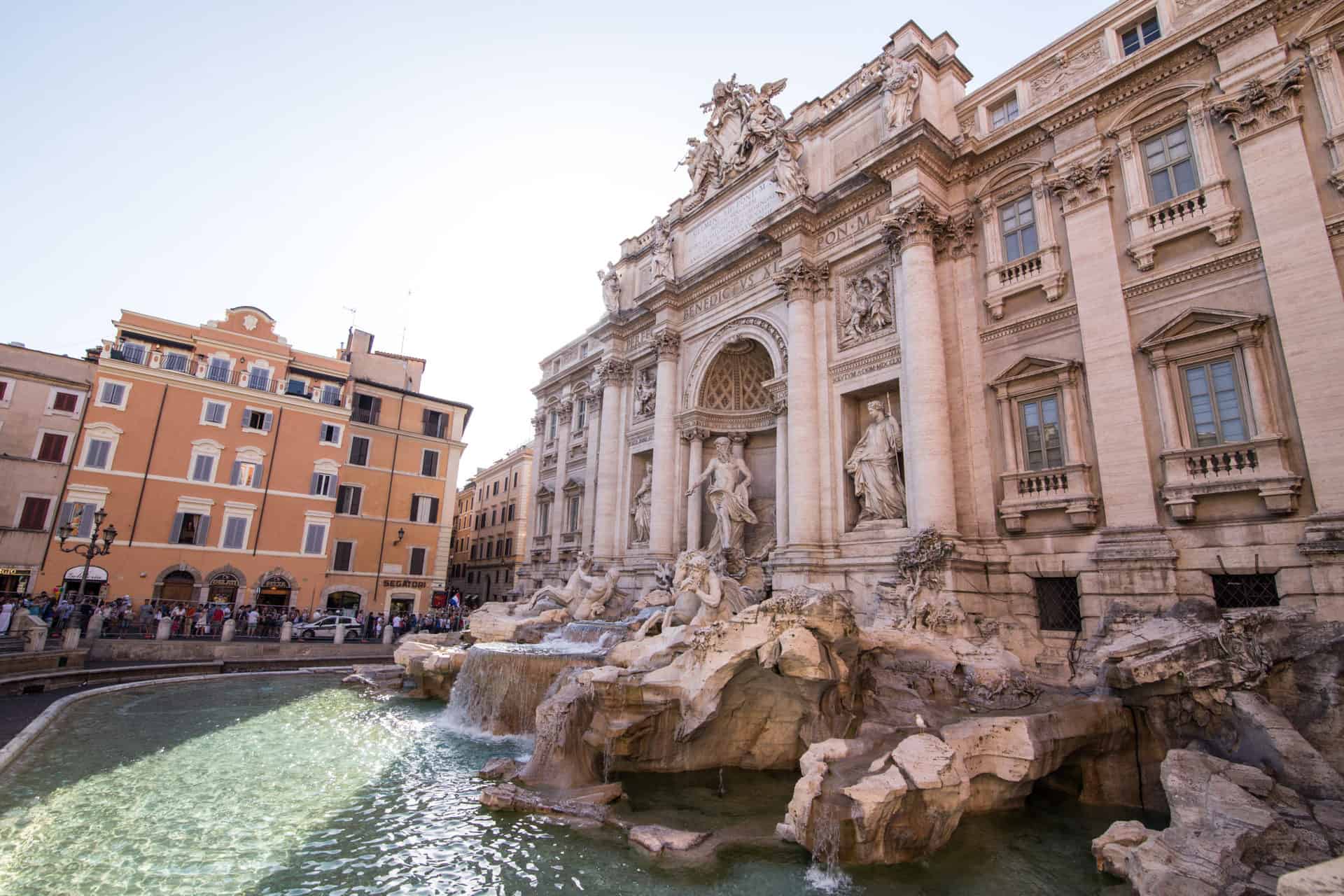Dive into Digital: Augmented Reality’s Impact on Cultural Tour Experiences

Updated On: February 24, 2024 by Ciaran Connolly
Advancements in reality technologies have ushered in a new epoch for travel and cultural exploration. Through the lens of augmented reality (AR), we are witnessing a significant transformation in the way we experience cultural tours. Unlike virtual reality (VR), which crafts entirely new environments, AR enhances our real-world perception with digital overlays that bring history and culture to life. These immersive enhancements break down barriers between the present and the past, enabling us to traverse time and breathe fresh vitality into historical insights and cultural storytelling.

As augmented reality garners momentum, its impact on the tourism sector becomes more profound. AR provides an unparalleled platform for storytelling, empowering curators and guides to embellish physical spaces with interactive narratives and contextual information. This has yielded a richer, more engaging visitor experience, facilitating deeper connections with the cultural heritage being explored. AR is not just an additive element to tours—it’s reshaping the mechanics of cultural tourism by making it more accessible, engaging, and informative for a broad audience. We are no longer just passive observers of cultural relics; AR invites us into an active engagement with history, transforming each visit into a unique, personalised journey.
Amidst the technological crest, AR also brings newfound opportunities for inclusivity, allowing individuals who may not physically travel to distant locales to enjoy the splendours of world heritage from the comfort of their homes. This technology also has the potential to serve as a powerful marketing tool, captivating audiences through the promise of immersive travel experiences. Looking ahead, the continual evolution of AR promises to further revolutionise cultural tourism, driving innovation in how we interact with and preserve our global heritage.
Key Takeaways
- Augmented reality enhances cultural tours by adding interactive elements to the visitor experience.
- AR technologies are reshaping cultural tourism by making it more immersive and accessible.
- The future of AR in cultural tourism carries the potential for increased engagement, inclusion, and innovative marketing.
The Evolution of Augmented Reality
In this section, we explore augmented reality’s rapid development, from its conceptual beginning to its current state, where it enhances our interaction with the world and cultural experiences.
Defining Augmented Reality
Augmented Reality (AR) is a technology that overlays digital information, such as images, videos, or sounds, onto the real world. Unlike Virtual Reality (VR), which creates a completely artificial environment, AR enhances our reality by adding to it, not replacing it.
Historical Milestones
The inception of AR can be traced back to 1968, with Ivan Sutherland’s creation of the first head-mounted display system. It wasn’t until 1990, however, that the term “augmented reality” was officially coined by Boeing researcher Tim Caudell. The past decades have seen AR transition from a novel concept to an accessible reality, underpinned by strides in artificial intelligence and the Internet of Things (IoT), which have expanded its applications and user base.
Technological Innovations
The last few years have been particularly transformative, thanks to breakthroughs in AR applications powered by artificial intelligence and advances in mobile technology. These innovations have fostered technological developments that enable AR to be used across various sectors, including cultural tours, where it adds layers of understanding and engagement to the experience. The Unified Theory of Acceptance and Use of Technology helps explain the widespread adoption of AR, as its utility and ease of use grow, making it an integral part of how we interact with and interpret our surroundings.
Augmented Reality and the Tourism Sector
Augmented reality (AR) technology is revolutionising the tourism industry by enhancing cultural tours and heritage tourism with interactive experiences.
Integrating AR into Tourism
AR introduces a layer of digital enrichment that allows us to blend virtual elements with the real world at tourist destinations. For example, through our smartphones or AR glasses, we may witness historical re-enactments on the very grounds where they occurred. This integration is transforming destination marketing by offering potential tourists a sneak peek of what they can experience, which aids in their travel decision-making process.
The Impact on Travel and Booking
AR technology is altering the landscape of travel and booking. It’s enabling a more immersive planning experience, allowing travellers to virtually visit their desired locations before booking. Heritage and cultural tourism greatly benefit, as AR can provide a virtual tourism experience that brings to life cultural narratives and heritage sites from the comfort of one’s home. Through AR applications, prospective visitors can explore the intricate details of places they intend to visit, which boosts confidence in their travel decisions and can lead to increased bookings for those offering enriched experiences.
Cultural Heritage and AR
Augmented Reality (AR) is transforming cultural heritage, offering immersive experiences that enhance engagement and learning.
Enhancing Museums and Galleries
Museums and galleries are incorporating AR to create interactive displays that bring artefacts to life. For instance, patrons can witness a 3D reconstruction of ancient objects or participate in storytelling sessions where historical figures are animated through AR. This technology allows us to overlay digital information onto existing exhibits, making them more informative and engaging.
By using AR, artworks and exhibits in art galleries can be explored in new dimensions. We now have the capability to provide visitors with layers of digital information, from an artist’s background to the techniques used in a particular piece. This enhancement encourages a deeper appreciation and understanding of art.
Revitalising Historical Sites
Historical sites, through the lens of augmented reality, are no longer static relics of the past but dynamic spaces that can tell their rich stories. Visitors using AR can now experience reconstructions of cultural heritage sites as they once were, such as walking through a bustling Medieval marketplace or witnessing the construction of ancient monuments.
For cultural institutions, AR is a powerful tool that revives interest in cultural heritage. It transforms historical sites into interactive learning environments. These augmented experiences assist us in preserving sites for future generations, while offering accessible ways for the current generation to connect with their cultural legacies.
The Mechanics of AR in Cultural Tours

As we explore the mechanics of AR in cultural tours, we must consider the pivotal role of mobile devices in delivering immersive experiences, as well as the cutting-edge equipment transforming user interactions with history and culture.
Smartphone and Tablet Integration
Smartphones and tablets are at the forefront of AR technology, providing a user-friendly platform for immersive cultural experiences. Through AR apps, these devices overlay digital information onto the real-world environment, enhancing the cultural narrative with images, text, and sound for a multisensory tour. The user experience is significantly enriched as they witness history unfold before their eyes on their personal devices.
- Usage: Visitors use their own smartphones or tablets to access AR content.
- Accessibility: High penetration of mobile devices allows a wider audience to engage with AR.
Wearable Hardware and Advanced Equipment
Beyond handheld devices, the integration of wearable hardware like smart glasses introduces a hands-free dynamic to AR tours. Advanced equipment, incorporating computer vision and spatial audio, crafts a seamless blend of the virtual and real, often with higher fidelity and interactivity.
- Wearables: Devices like AR headsets project information directly to the user’s field of vision.
- Enhancements: High-quality visuals and sound, combined with motion tracking, increase presence.
Augmented Reality is reinventing the way we experience cultural sites, with each technological stride offering a deeper dive into our world’s treasures.
Storytelling Through AR
Augmented Reality (AR) is revolutionising the way we share and consume stories, especially in cultural tours. By blending the digital and physical worlds, AR allows us to craft narratives that are deeply immersive and interactive, providing new ways to learn and be entertained.
Immersion and Interactive Narratives
AR transports users into narratives that feel real and present, lending a sense of immersion that traditional storytelling mediums cannot match. This presence is key to AR’s appeal, as it lets users not only witness a story but also participate in it. Through AR experiences like exploring digital storytelling in 3D with Wintor and the National Military Museum, audiences are not just passive recipients but active participants in unfolding tales. As they engage with AR-enabled artefacts or locations, the line between observer and story participant blurs, creating a flow that deepens the connection to the narrative.
Education and Entertainment
The educational aspect of AR in storytelling is vast. It brings a dynamic layer to learning which can be particularly engaging for younger audiences. Historical facts and figures can be brought to life, fostering interactive learning, as seen with GPS-linked triggers that synchronise digital elements on actual locations. On the entertainment front, users can enjoy historical sites alongside virtual characters or view scenes playing out in specific venues, greatly enhancing the user experience. Combining education and entertainment through AR allows cultural stories to be passed down in a captivating, memorable manner.
By integrating AR into storytelling on cultural tours, we are creating experiences that are not only enjoyable but also contributory to learning and preserving history. This innovative blend of technology and narrative is a powerful tool that enriches the experiences of all who engage with it, marking a new era in the art of storytelling.
Visitor Experience and Engagement
Augmented Reality (AR) technologies are transforming the way we interact with cultural tours, making the user and tourist experience more engaging and compelling. Through involvement and interactivity backed by AR, we’re seeing a significant shift towards enhanced visitor satisfaction.
Involvement and Interactivity
For us, it’s about creating a tourism experience that goes beyond passive observation. AR provides visitors with a hands-on approach, turning exploration into an active experience. By interacting with the environment in a meaningful way, visitors are more likely to feel a deep involvement with the cultural nuances presented to them. Tools like AR can lead to a state of flow, where tourists are completely immersed in the activity, finding both joy and engagement in their tourism experiences.
Enhancing Visitor Satisfaction
As we integrate AR into cultural tours, perceived enjoyment and satisfaction levels soar. Visitors are not just seeing the sights; they’re actively participating in them, which leads to a more rewarding tourism experience. It’s this feeling of being part of something larger, the sense that one is truly connecting with the culture and history of a place, that enhances the overall tourist experience.
In summary, the use of AR in cultural tours has led to greater involvement that elevates the standard tourism experience into something far more interactive and enjoyable, resulting in higher visitor satisfaction.
AR, Accessibility, and Inclusion

Augmented Reality (AR) is pioneering new ways to enhance cultural tours, ensuring they are more accessible and inclusive for all participants, regardless of their abilities.
Breaking Down Barriers
The implementation of AR in cultural experiences is a powerful step towards breaking down accessibility barriers that have traditionally excluded individuals with disabilities. For instance, during the COVID-19 pandemic, the necessity for safe and accessible cultural engagement became even more pronounced. AR has answered this call by allowing users to enjoy tours from the comfort of their own homes. It also offers alternative ways to engage with content, such as subtitles for the hearing impaired, audio descriptions for the visually impaired, and customizable settings that address a range of accessibility needs.
Through these innovations, museums and historical sites can offer inclusive experiences that adapt to individual visitor preferences and requirements. The personalised user experience fostered by AR technology is paramount in this new age of cultural exploration, ultimately enhancing customer experiences and providing equitable access for everyone.
Personalised Visitor Experiences
By harnessing AR, cultural sites can deliver personalised visitor experiences that are uniquely tailored to each individual’s interests and inclusion needs. Let’s consider the example of a visitor with mobility issues; AR can create virtual pathways that allow them to experience parts of a site that might otherwise be inaccessible. Furthermore, through personalisation features, visitors can choose the themes or eras they are most interested in, creating a self-guided tour that resonates with their personal tastes.
This level of personalisation not only improves accessibility but also greatly enriches the user experience, offering a deeper, more meaningful connection with the cultural narrative being explored. As a result, the stories of heritage and history become more vibrant and engaging for all, fostering a sense of community and shared understanding among diverse audiences.
Marketing and AR
We recognise the transformative power of Augmented Reality (AR) in the realm of marketing, especially when it comes to elevating cultural tours and destination marketing experiences. By integrating VR technology, marketers can craft immersive narratives that transcend traditional advertising, providing potential visitors with a tantalising glimpse of what awaits them, and influencing their travel decisions. The rise of AR in marketing ushers in novel promotional strategies across social media platforms and compels us to reconsider the balance of cost versus the return on investment (ROI) in our marketing efforts.
Promotional Strategies and Social Media
In today’s digital ecosystem, AR stands as a groundbreaking tool for destination marketing, allowing us to craft compelling stories and interactive experiences that capture the essence of cultural tours. Through social media, these AR experiences become sharable and participatory, inviting users to engage with our content in a meaningful way. For instance, by offering a virtual tour of an Irish castle’s hidden rooms or an interactive map detailing the historical significance of ancient landmarks, we breathe life into these destinations, enticing travellers and culture enthusiasts.
- Virtual Reality Tours: Give a first-person perspective of cultural sites.
- Interactive Maps: Allow users to uncover historical facts and figures.
- Social Media Filters and Games: Engage users with location-based challenges.
Measuring Cost and ROI
Calculating the costs associated with AR marketing initiatives is crucial, but the true measure lies in its ROI. AR technologies require a front-loaded investment; however, the pay-offs can be substantial. A well-executed AR campaign can dramatically increase brand visibility and customer engagement, leading to a rise in cultural tour attendance and sustained interest in heritage sites.
| Investment | Expected ROI |
|---|---|
| AR App Development | Increased engagement, online bookings |
| Social Media Ads | Greater reach, higher conversion rates |
By monitoring metrics such as user interaction rates and conversion from virtual experiences to actual tour bookings, we can quantify the effectiveness of our AR strategies. Our investment into these technologies aims not merely at profit, but at forging deeper connections between people and the rich tapestry of global cultures we promote on our platform.
The Social and Cultural Impact of AR

Augmented reality (AR) technology is revolutionising cultural tours, creating immersive experiences that enhance both cultural sustainability and the traveller’s journey in a post-COVID-19 world.
Cultural Sustainability and Preservation
AR contributes significantly to the sustainability of cultural heritage. By adding digital layers of information to physical sites, cultural heritage tourism gains an interactive dimension. Visitors interacting with historical landmarks via AR can uncover stories and facts that might be invisible in the current landscape. For instance, ruined castles come back to life with projections of their former grandeur, enabling us to understand and appreciate the past in context. This tech-driven approach aids in the preservation of sensitive sites, as physical contact is reduced, thus mitigating damage to the relics of human civilisation.
AR in Post-COVID-19 Tourism
The COVID-19 pandemic altered the landscape of tourism, urging the industry to adapt to new normalities. Social distancing brought forth an increased reliance on technology, and AR has been pivotal in rejuvenating tourism. Virtual queues, AR-guided tours without the crowd, and touchless information points became essential for maintaining safety. Moreover, the integration of AR with social media platforms allowed previously inaccessible cultural experiences to be shared virtually. This became a lifeline for the tourism sector during lockdowns and travel bans, and continues to offer an engaging way for people to explore the world safely and responsibly.
Future of AR in Cultural Tourism

The integration of Augmented Reality (AR) in cultural tourism heralds a transformative journey ahead, promising enhanced immersive experiences through emerging technologies and focused research directions.
Emerging Technologies and AI
We observe that Artificial Intelligence (AI) has begun to intersect with AR, offering a more personalised and interactive visitor experience. In the near future, AI-driven AR applications could analyse user preferences to customise tours in real-time, magnifying the aesthetic and creative aspects of cultural exhibits. Moreover, these applications are poised to become more intuitive, with mixed reality systems blending physical with virtual elements, elevating the engagement levels of heritage exploration to unprecedented heights.
Future Research Directions
Our attention is steered towards the need for comprehensive research that scrutinises the impact of AR on visitor engagement and learning outcomes. Future studies are expected to map the empirically tested relationships between AR applications and visitor satisfaction. This inquiry will undoubtedly explore the integration of virtual reality technologies and gaming elements in cultural tourism, defining a new frontier in creating memorable tourism experiences. Research will likely propose newer models, utilising technological innovations to forecast emerging trends and nurture a synergy between AR and heritage presentation.
Frequently Asked Questions
Augmented Reality (AR) is reshaping how we engage with culture and heritage. Through digital overlays, interactive storytelling, and enhanced educational experiences, AR is opening new dimensions in cultural exploration.
What impact does augmented reality have on cultural experiences?
AR brings a transformative touch to cultural experiences, allowing for interactive and personalised storytelling. It superimposes digital information onto physical objects and sites, offering a more engaging and informative visit.
In what ways is AR transforming the travel and tourism industries?
AR is a game-changer in travel and tourism, providing tourists with immersive experiences that blend the real world with digital enhancements. It enables travellers to access information and visualisations that were previously impossible, reinventing the sightseeing adventure.
How can augmented reality revolutionise the tourist’s experience through digital overlays on real-world settings?
Through digital overlays, AR revolutionises the tourist’s experience by providing in-depth background information, storytelling, and visual effects that enrich the real-world environment, bridging the gap between past and present.
What role does AR play in enhancing virtual cultural tours?
AR enhances virtual cultural tours by offering an immersive experience that users can enjoy from anywhere. It adds layers of interactivity and engagement by simulating a physical presence at cultural sites and exhibitions.
How is immersive technology like AR influencing museum and heritage site visits?
Immersive technology such as AR is drastically influencing museum and heritage site visits. It enables virtual reconstructions of historical artifacts, interactive guides, and even the visualisation of ruins in their former glory, making visits more dynamic and educational.
What are the potential benefits for educational aspects of cultural tours with the integration of AR?
The integration of AR in cultural tours presents numerous educational benefits. It facilitates a richer understanding of historical contexts, provides multi-sensory learning opportunities, and can address various learning styles through interactive and captivating content.






